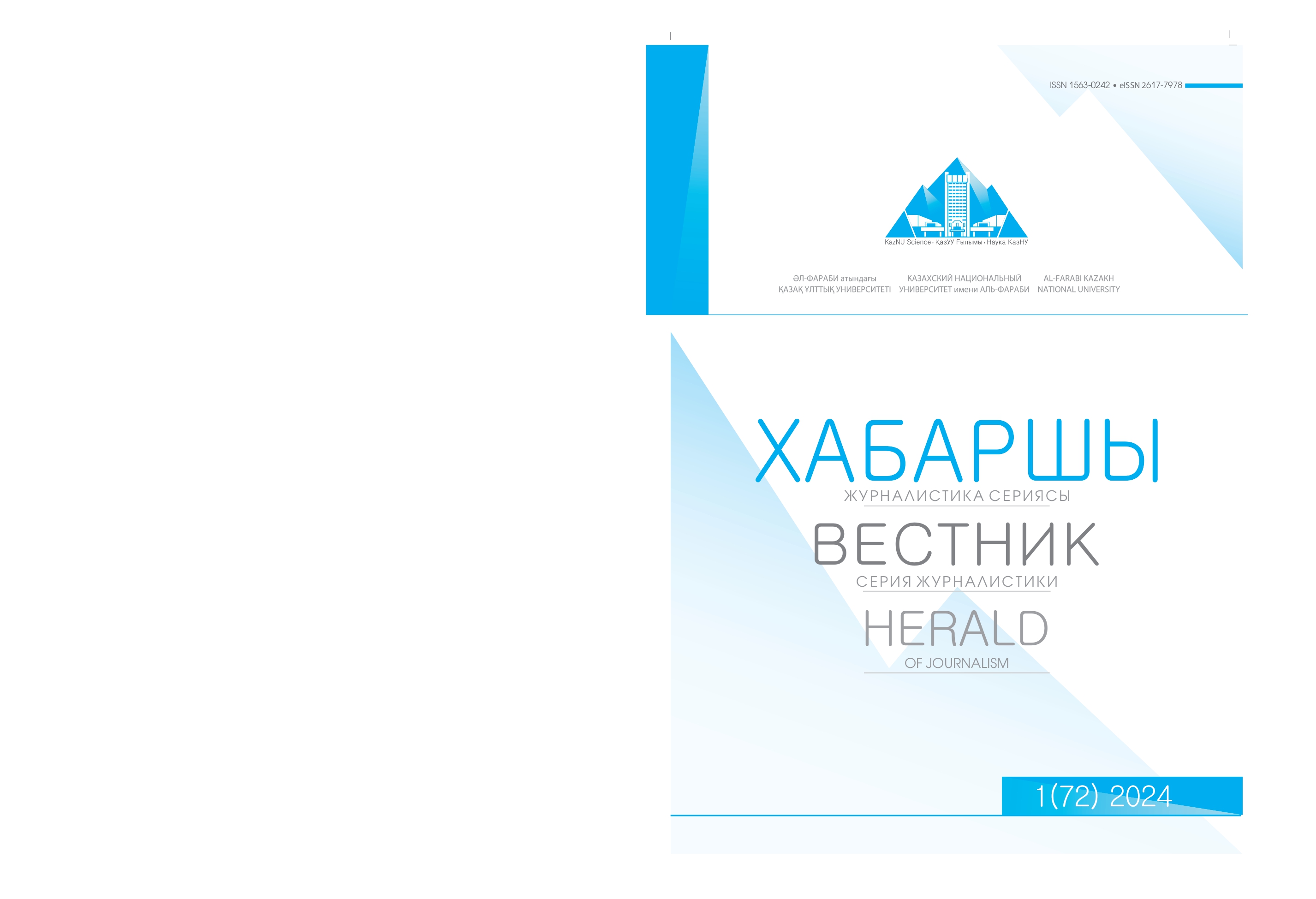The effectiveness of information and communicative processes: theories and problems
DOI:
https://doi.org/10.26577/HJ.2024.v72.i2.5Keywords:
communication, information, effectiveness, communicator, respondent, management, civilization.Abstract
This article considers the main theories of information and communication processes, which have become classics in the field of media research, as well as actual problems related to their implementation in modern institutions of society. The aim of the study is to research the effectiveness of information and communication processes that meet the ideas of humanism, counteracting manipulative technologies of impact on human consciousness. The significance of research lies in its scientific and practical implications, which are influenced by contemporary issues in the application of media technologies. Primarily, these issues revolve around the removal of spiritual and moral experiences from the societal perspective in an increasingly globalized world.
The methodology of the study includes historical and dialogue approaches, directed on the analysis of communicative bases through the prism of humanity development. As a result of the analysis of the selected topic, the author concludes that it is communicative processes aimed at the construction and formation of equal dialogue between communicators are priority to overcome the acute problem of spiritual values in a global society. The effectiveness of information and communication processes is directly related to interactivity practices that focus on dialogue and can help a person overcome feelings of frustration. The value of the conducted research is determined by the author’s attempt to apply ethical communicative practices in the development and implementation of modern mass communication technologies, which is the greatest difficulty, because the present conditions of economic competition have intensified the manipulative nature of information flows. The practical importance of this scientific endeavor lies in the potential application of the communication theories investigated by the author. Specifically, these theories can be utilized to address challenges related to the efficiency of information processes in the realm of mass communication.




